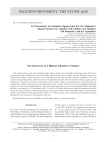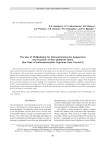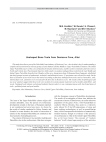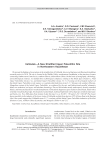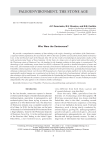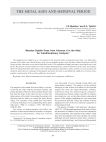Paleoenvironment, the stone age. Рубрика в журнале - Archaeology, Ethnology & Anthropology of Eurasia
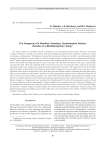
The Vengerovo-2A Neolithic cemetery, Southwestern Siberia: results of a multidisciplinary study
Статья
Бесплатно
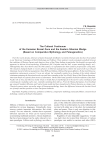
Статья научная
Over the recent decade, abstracts of many thousands of folktales recorded in Europe and Asia have been added to our Electronic Catalogue of World Mythology and Folklore. Their analysis reveals systematic parallels between the traditions of Western Eurasia and America, those of the Plains Indians in particular. Such motifs are especially apparent in Ancient Greek mythology (Phaethon’s fall, Pasiphae and the bull, cranes attacking dwarfs, etc.). Although they have been known since the 19th century, no explanation for them could be proposed for a long time. The situation changed thanks to recent advances in Siberian paleogenetics. Before the peak of the Last Glacial Maximum, Eastern Siberian populations (Yana RHS and Malta) exhibited European affinities. By the mid-Holocene, population replacement occurred. It was not abrupt, but eventually resulted in a breakup of the initial cultural continuum spanning the Eurasian boreal zone and later extending to the New World. Many of the Western Eurasian–American motifs are episodes from stories of adventures. On the other hand, parallels between traditions of the Indo-Pacific rim of Asia and America mostly relate to motifs that are mythological in the narrow sense (etiological and cosmological), including early ones, evidently stemming from Africa. From the Hunno-Sarmatian, if not Scythian age onward, Southern Siberian and Central Asian motifs had been transferred to Western Eurasia on a large scale. Classical sources mirror an earlier stage of European mythology, hence the difference between the Ancient Greek set of motifs and that peculiar to later European traditions.
Бесплатно
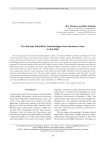
The earliest Paleolithic assemblages from Denisova cave in the Altai
Статья научная
The article presents the results of multidisciplinary studies of the Early Middle Paleolithic assemblages from the lower part of the Denisova Cave Pleistocene sequence in the East Chamber and the Main Chamber of the cave. Data on geochronology, small and large vertebrate fauna, palynology, stratigraphy and micromorphology of sediments containing the earliest archaeological fi nds at the site, as well as on petrography, traceology and archaeozoology are presented. We des cribe human fossils and aDNA studies based on them. These materials demonstrate that the fi rst inhabitants of the cave and those associated with the Early Middle Paleolithic traditions were Denisovans. On the basis of the collection, which includes over 35,000 artifacts, the technology and typology of the Denisova industry are reconstructed. We focus on the comparison of the Denisova Early Middle Paleolithic with chronologically closest industries of North and Central Asia. The most similar industry is the Acheulo-Yabrudian of the Near East. Parallels concern primary reduction techniques and tool types. A hypothesis explaining the appearance of Middle Paleolithic traditions in Southern Siberia is proposed. We demonstrate continuity in the evolution of the lithic industries of Denisova up to the autochthonous emergence of the Upper Paleolithic ca 50,000 years ago.
Бесплатно
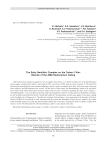
The early Neolithic complex on the Tartas-1 site: results of the AMS radiocarbon dating
Статья
Бесплатно
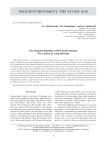
The incipient Neolithic of the Kurile islands: the culture of long barrows
Статья научная
This study introduces a recently discovered Neolithic culture of insular Northeast Asia. The initial stage of the Kurile Neolithic is described using findings from the 2019–2020 excavations at Kitovyi-2 and -4 on Iturup Island, the Greater Kurile Chain, Sakhalin Region. Several types of Neolithic feature were first revealed on the Kuriles by excavating large areas. The site includes dwellings mostly of two types–terranean with wooden frames that are not dug into the ground, and semisubterranean. Artifacts include linear-relief pottery and retouched bifacial stone tools on flakes and entire singularities, processed by advanced polishing. For the first time on the Kuriles, long barrows encircled by basalt plates along the perimeter were detected. These structures with evidently non-utilitarian enclosures made of plates, tentatively identified as places for cremation burials and funerary rites, indicate symbolic behavior. On the basis of this key criterion, we propose to attribute Kitovyi-2 and -4 to the culture of long barrows. Stratigraphic evidence, supported by radiocarbon analysis, allows us to establish the initial stage of the Kurile Neolithic, dating to 13.0–8.5 cal ka BP.
Бесплатно
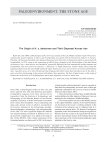
The origin of H. S. Denisovan and their dispersal across Iran
Статья научная
Before the early 2000s, anthropologists spoke of two taxa existing in the Late Middle and Early Upper Pleistocene: anatomically modern humans in Africa and Neanderthals associated with the Mousterian industry in Eurasia. Therefore, all Eurasian Paleolithic sites dating to that period were believed to be Mousterian and were associated with Neanderthals. In 2010, owing to the sequencing of mtDNA from a fragment of the distal phalanx of the hand found in Denisova Cave, a third species was introduced, genetically different from both anatomically modern humans and Neanderthals. This new taxon was termed H. s. denisovan—or simply Denisovan. Further studies showed that this population dispersed in the Late Middle and Early Upper Pleistocene across vast territories of Central and Southeast Asia. A question arose as to where Denisovans had originated and which routes they had taken to get to the Altai. A series of articles forthcoming in this journal will address these questions. The first of them focuses on the origin of Denisovans on the basis of H. heidelbergensis and on their migration via Iran to Central Asia.
Бесплатно
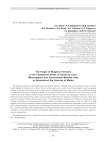
Статья научная
We outline the results of mineralogical and geochemical analyses of Middle Pleistocene sediments of layer 21 in the Main Chamber of Denisova Cave, Altai. The aim of the study was to reveal a set of mineralogical and trace element markers of the black-colored horizons or lenses and to distinguish them from other types of cave sediments. Results were matched with those relating to a similar set of markers of black-colored horizons in the Holocene part of the section in the East Chamber. Results indicate probable sources of organic and organogenic substances in layer 21. The preservation of geochemical marks was assessed for Pleistocene in comparison with Holocene strata, where those markers are distinct. Black-colored lenses in layer 21 resemble biogenic sediments from Holocene section of the East Chamber. Both layers are characterized by high contents of N-bearing organic matter, P, Zn, Cu, and Cd. In bulk samples from Holocene sediments, numerous fragments of chitin (insect exoskeletons) and patches of newly formed Ca and Ca-Mg phosphates were found. We conclude that these peculiar lenses consist mostly of guano from insectivorous bats, and had undergone deep biodegradation. All black-colored horizons and lenses studied in Denisova Cave have a similar set of geochemical markers and distinctly differ from the adjacent strata by their phase, macro- and trace element compositions.
Бесплатно
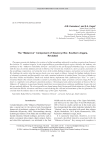
The “Makarovo” component of Sosnovyi Bor, Southern Angara, revisited
Статья научная
The paper presents the findings of a revision of a flint assemblage subjected to aeolian corrasion from Sosnovyi Bor horizon VI, southern Angara, in the Angara-Belaya geoarchaeological region. Initially, the industry was attributed to the “Makarovo Paleolithic Horizon” and dated to the pre-Karga/pre-Murukta stage in accordance with the idea of extreme deflation periods in Siberia. Our revision has resulted in a more accurate assessment of the assemblage composition, correcting the views of the toolkit, flaking strategies, and aeolian corrasion of lithics. We challenge the earlier idea that narrow-faced cores were made on bifaces. Instead, the findings indicate the use of volumetric prismatic and flat-parallel cores with a maximal reduction of residual forms. Two types of blanks are described: blades and bladelets. Small tools include burins, implements with a fashioned tip (“nose” or “spur”), retouched blades (the retouch sometimes extends to proximal parts). Signs of aeolian corrasion range from weak luster to completely worn-off facets and pitted surfaces. Chronological and cultural proximity of Sosnovyi Bor to Makarovo IV industries is questioned despite similarities in post-deposition conditions and flaking, because the tool kits are markedly different. The closest parallels are found among Early Sartan small-blade industries of Trans-Baikal and Yeniseian Siberia. Abrasion could have occurred during the cold and arid maximum of the last glaciation. We conclude that the industry dates to the middle stage of the Upper Paleolithic.
Бесплатно
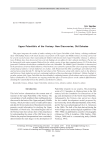
Upper Paleolithic of the Yenisey: new discoveries, old debates
Статья научная
This paper integrates the results of studies relating to the Upper Paleolithic of the Yenisey, collating traditional ideas with fi ndings made in the latest decades. Excavations on the Upper and Middle Yenisey are being carried out by several research teams. Sites representing the hitherto little known Early Upper Paleolithic (Yasnoye I, Afontova Gora II-Sklon) have been discovered, but so far the fi ndings do not suffi ce for their cultural attribution. The key site for that period in the region remains Malaya Syia, for which a series of new dates ranging between 34–29 ka has been generated. Traditions revealed there continued at a later site, Sabanikha. The Middle Upper Paleolithic is characterized by the prevalence of various blade industries, which in most cases cannot be separated into clear-cut groups resembling archaeological cultures. Certain industries are archaic, with Mousterian-like lithic assemblages and elaborate bone and tusk processing (Kurtak IV). During the later phase of the Pleistocene, along with cultures such as the Afontova and Kokorevo, blade industries survived, continuing traditions of the preceding stage (Golubaya I, Maltat, Konzhul). A peculiar variant of the Upper Paleolithic has been identifi ed, combining features of both cultures and a series of foliated bifaces (Kuibyshevo II). Discussions are ongoing around the effect of various factors on the cultural differentiation, including the relationship between the Afontova and Kokorevo cultures.
Бесплатно

Статья научная
Primary reduction techniques used at the site of Kara-Bom in the Altai Mountains, are analyzed using the refi tting method. In previous studies, the Kara-Bom assemblages provided the basis for reconstructing the evolution of lithic industries in the Altai Mountains over most of the Middle Paleolithic and at the early stages of the Upper Paleolithic (ca 60–30 ka BP). Under the new stratigraphic subdivision of Kara-Bom, four habitation stages are described. The refi tting of artifacts from the Middle Paleolithic (MP2) layer indicates Levallois unidirectional convergent fl aking aimed at producing points and blades as a co-product of reduction sequences. Based on cores and groups of spalls from the Upper Paleolithic layers UP2 and UP1, the variation of Upper Paleolithic reduction techniques is reconstructed and a conclusion is made that signifi cant changes in core reduction occurred: the Middle Paleolithic (Levallois) fl at unidirectional technique gave way to bidirectional volumetric subprismatic and prismatic reduction of the Upper Paleolithic type. The Kara-Bom assemblages appear to have been stable variants of blade technology aimed at producing large and medium-sized blades as well as reduction of narrow-faced cores aimed at producing bladelets. The comparison of Kara-Bom with contemporaneous industries of northern and eastern Central Asia suggests that the earliest Upper Paleolithic assemblages (before 35 ka BP) show a marked predominance of the Kara-Bom-type reduction techniques.
Бесплатно
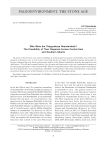
Статья научная
My article in the previous issue, based on findings of archaeological excavations of Paleolithic sites in the Altai, primarily in Denisova Cave, as well as facts concerning the time of origin of Neanderthal anatomy and genetics in Europe, challenged the view, based on the genetic analysis of the Altaian Neanderthals, that they had migrated to the Altai before 175 ka BP and occupied Denisova Cave by turns with Denisovans. In fact, the Neanderthal occupation of the Altai began apparently no earlier than 60 ka BP. Thus far, Neanderthal fossils with a Micoquian Mousteroid industry have been found in three caves: Chagyrskaya, Okladnikov, and Strashnaya. This group of Neanderthals, evidencing the easternmost dispersal wave of those humans in Asia, was termed the Chagyrskaya group.
Бесплатно


